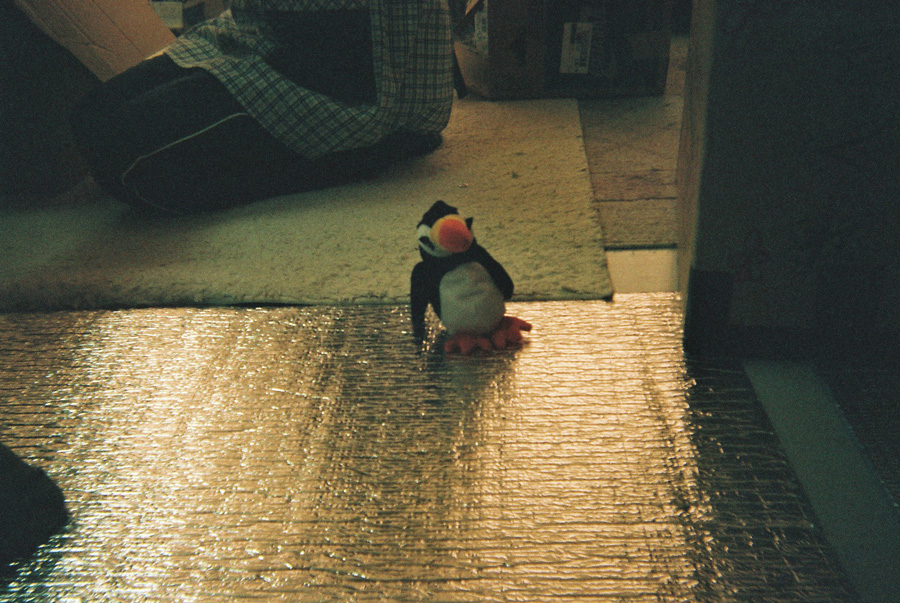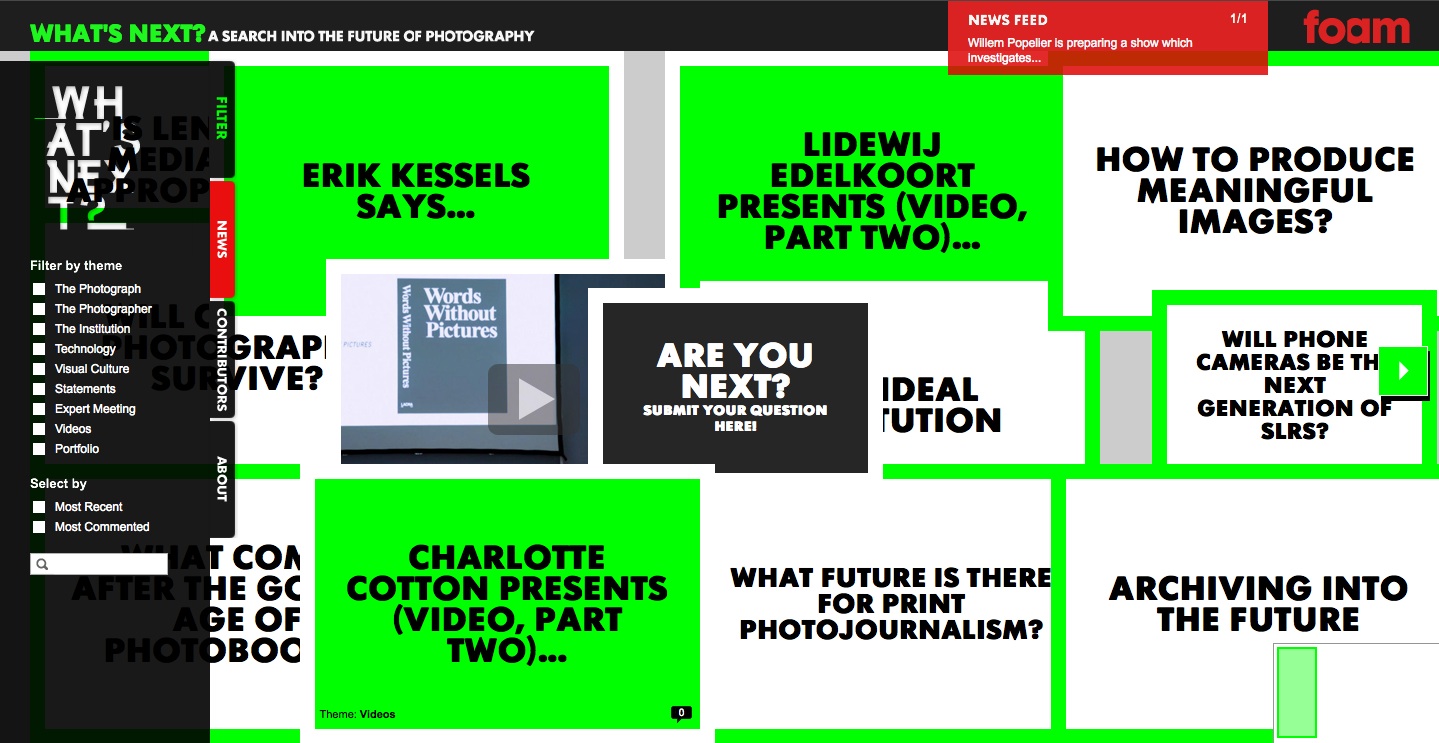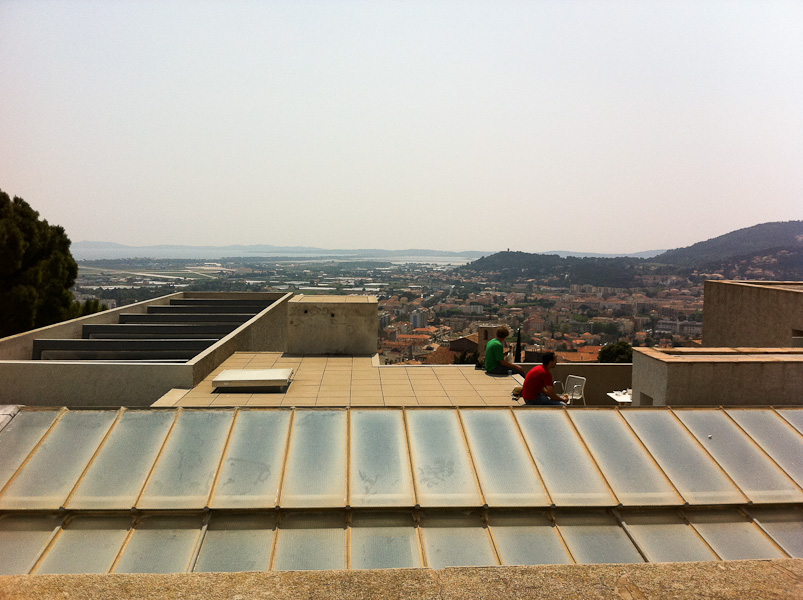 After the earthquake and subsequent tsunami struck the Tohoku region of region on 11 March 2011, the photographer Aichi Hirano decided to distribute 50 disposable cameras to the people in the shelters around Ishinomaki. He succeeded in retrieving 27 of these 50 cameras and subsequently published the results on a website created for the project www.rolls7.com This is a piece I wrote about the Rolls Tohoku project. It was first published in Foam magazine issue #27, 'Report', which has just been released (the issue is really an fascinating exploration of what reporting means in photography today... don't miss it). This summer the museum of photography in Stockholm, Fotografiska, will be exhibiting the Rolls Tohoku project from 7 July to 28 August. Rolls had a deep impact on me (as you will see from the following) and I urge you to take the time to spend some time looking at these photographs.
After the earthquake and subsequent tsunami struck the Tohoku region of region on 11 March 2011, the photographer Aichi Hirano decided to distribute 50 disposable cameras to the people in the shelters around Ishinomaki. He succeeded in retrieving 27 of these 50 cameras and subsequently published the results on a website created for the project www.rolls7.com This is a piece I wrote about the Rolls Tohoku project. It was first published in Foam magazine issue #27, 'Report', which has just been released (the issue is really an fascinating exploration of what reporting means in photography today... don't miss it). This summer the museum of photography in Stockholm, Fotografiska, will be exhibiting the Rolls Tohoku project from 7 July to 28 August. Rolls had a deep impact on me (as you will see from the following) and I urge you to take the time to spend some time looking at these photographs.
Update: a Japanese translation of the text is now available on Foam's website.
Japan lives with the constant threat of natural disasters. Located in a highly unstable sector of the Pacific Ring of Fire, it experiences hundreds, if not thousands of earthquakes every year and has become the best-prepared country in the world for quakes and the tsunamis which can follow. But nothing could have prepared the population for the gigantic quake and tsunami that devastated the Tohoku region of north-eastern Japan.
The earthquake and tsunami of 11 March 2011 was very likely the most highly-mediatized natural disaster ever. Although a large tsunami hit parts of Southeast Asia in 2004, very few images emerged of the brief moments of impact of the tsunami, but rather of the destruction that it left behind. Amateur footage was released in Japan shortly after the quake and within minutes the Japanese national broadcaster NHK sent helicopters out in anticipation of the tsunami that was expected to hit the Tohoku coastline. The resulting images showed the black wave swallowing everything in its path. Over the next few hours more footage was released, most of it shot by amateurs, showing the impact of the wave up and down the Tohoku coast. The spellbinding images, which played back on television and computer screens around the world, captured the brutal power and relentlessness of the tsunami. Some of the footage was also imbued with an eerie sense of dread as houses and cars floated down streets that had been full of activity just a few minutes before. The scale of the devastation quickly became apparent and, although the number of confirmed deaths was initially low, the images suggested that a huge death toll was inevitable.
Yet, within days the situation in Tohoku had all but disappeared from the international media as the troubling developments at the Fukushima Daiichi nuclear plant began to monopolize the headlines. The towns of Minami Sanriku, Ishinomaki, Miyagi and Sendai that had been the center of attention until then receded into the shadow of Fukushima. A little over a week after the quake, I picked up a free newspaper on the Paris metro. The cover was a photograph of the Eiffel Tower on a hazy day, presumably taken weeks or months before. The headline read, ‘The Radioactive Cloud Arrives in France.’ The story had shifted from the tragedy that had befallen the people of Tohoku to the fear of what might happen to ‘us’. Within a week potassium iodide tablets had sold out as far away as Finland and the United States. Words like ‘meltdown’ or ‘radiation’ are so charged with meaning composited from science fiction and the very real horrors of Chernobyl or the fall-out from the atomic bombings of Hiroshima and Nagasaki, that there was little space left in the collective imagination for scientific fact. As a narrative, the nuclear threat was infinitely more powerful: this was no longer just another tale of people’s suffering somewhere on the other side of the globe, but an invisible and very personal threat to each and every one of us.
Although, I have never lived in Japan I have visited the country regularly in recent years. My involvement with Japanese photography somehow made the events of 11 March feel deeply personal. In the days following the disaster I watched the news obsessively, hungry for any information at all, but finding very little. In the era of the 24-hour news cycle, information and stories are constantly recycled and updated, as the same images, the same tiny scraps of information get repeated over and over every hour. It was not until I heard the personal stories, of friends—a dear friend trapped in a bullet train in a freezing, pitch-black tunnel for over 24 hours and then travelling for two days to get back home, another who lost his mother to the giant wave and whose native town was totally destroyed—or indeed strangers—an 80-year-old woman and her grandson who survived together for nine days after the quake and who, when asked what he would like to be when he is older, replied ‘an artist’—that I was able to get beyond the huge, abstract idea of a natural disaster. As with these stories, the photographs in the Rolls project were the first that I saw that went beyond the surface of this tragic event.
When the earthquake hit on 11 March, a young photographer, Aichi Hirano, was showing his work in an exhibition entitled Rolls of One Week. Hirano explains, ‘At that time, I felt so powerless, being in the same country yet unable to do anything to reach out and help directly.’ To combat his sense of helplessness, he decided to distribute fifty disposable cameras to survivors displaced by the tsunami who had been evacuated to shelters in Ishinomaki, Miyagi prefecture. Hirano provided some loose directions on sheets of paper: ‘Please take photos of things you see with your eyes, things you want to record, remember, people near you, your loved ones, things you want to convey… please do so freely. And please enjoy the process if you can, even if it's just a little bit.’ Of the 50 cameras he distributed, Hirano was able to retrieve 27, which he uploaded in their entirety to the website www.rolls7.com
Until Rolls, most of the images emerging from the Tohoku region focused on the spectacular devastation caused by the tsunami – cars piled on top of houses, forests of debris where villages had once stood. In the face of disaster, when we cannot believe our eyes, photography has often been used to fill that breach: to provide a visual record that captures events so shocking or spectacular that they are impossible to digest. Perhaps the most powerful recent examples were taken from satellites. Several news websites created an interactive display superimposing a satellite image taken on 12 March over an image taken some time before the tsunami. By swiping across the image the user shifts between before and after, revealing the huge areas of land that had been wiped clean by the wave. Although images like these are undeniably powerful, they have a strangely impersonal quality. They provide a macro perspective of the disaster, a kind of quantification of the scale of the devastation, but one which gives us no insight into the individual lives of those affected. By contrast, Rolls offers a deeply personal vision of the disaster from the perspective of those who have been directly affected. These images do not just show the pain and suffering of the victims, but also their joy, their relief and even the boredom and tedium that they experience as they seek to pass the time in their evacuation shelters.
For each roll we know only the photographer’s name, sex and whether they are an adult or a child. But perhaps it is wrong to use the term ‘photographer’. The very point of these images is that they were taken by amateurs. In contrast to the spectacle of the images that appear in the press, there is little that is at all remarkable about these photographs. In one roll a boy has photographed his stuffed toys one by one on a mat. In another (anonymous) roll, a donkey appears tied to a tree that is just beginning to blossom. The rolls are made up of small fragments like these which we cannot understand beyond the knowledge that they are parts of individuals’ lives, details which to them seemed important enough to photograph. They do not employ the visual language of photo-reportage or of fine art photography to convey a specific message. Their quiet, artless, unselfconscious quality makes these images all the more powerful, investing them with the directness of words spoken by a young child. Although images of destruction are also present, it is not the subject of the photographs, but instead a visual backdrop to the ordinary details of these people’s lives. In one roll such images appear as blurry glimpses from the window of a moving car, as if the reality of the destruction had yet to sink in.
Hirano’s exhortation to the survivors to ‘enjoy the process if you can’ can be seen in the shots, particularly those taken by children. We see laughter, friendship, play – elements that do not appear in conventional images of disaster, but which provide a fuller picture of the reality of life in its aftermath. These are not photographs of what has happened to these people or images that construct a narrative that seeks to make the disaster understandable. Instead, they form a part of people’s ongoing struggle to digest and comprehend what they have experienced and, more simply, of the need to carry on with their lives.
During my short visit to Japan in early April a powerful aftershock struck the Miyagi region. At the time, I was with a friend in a bar in Tokyo, after having been to yozakura, the tradition of viewing the cherry blossoms by night. This was my first experience of an earthquake: the entire room swayed back and forth for a few seconds before the shock subsided. Although everyone stayed calm, not moving from their seats, the recent events made the tension palpable. We spent the next minutes anxiously watching television for news from Miyagi. My friend was aware of the damage this aftershock would cause, particularly as she was due to visit the area soon afterwards. A few days later I received a message in which she wrote, “I have no words for what I saw there.” This failure of words has its parallel in photography: rarely do images effectively describe an event of this magnitude. These rolls of film from Tohoku come closer than anything else I have seen yet.


















